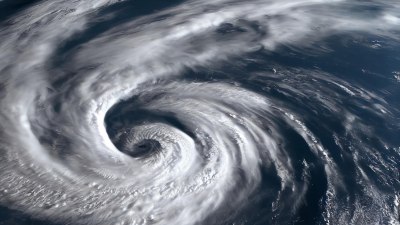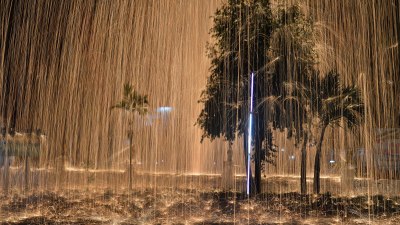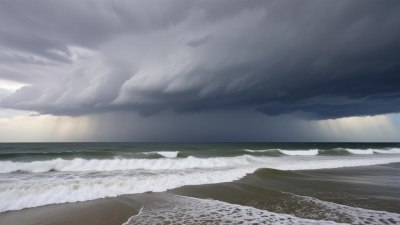How Hurricanes Create Storm Surges and Why They’re So Deadly
Explore the process of how hurricanes create storm surges and their devastating impacts on coastal communities.

Image by terraincognita on Freepik
Storm surges are one of the most dangerous phenomena associated with hurricanes, contributing extensively to their destructive power. Understanding how these surges are formed and why they are so deadly is crucial for both preparedness and response strategies. Storm surges arise when strong winds and low pressure from a hurricane interact with coastal water bodies. As hurricanes approach land, their winds push water towards the shoreline, resulting in a rise in sea level known as storm surge. This increased water level can lead to catastrophic flooding, eroding beaches, and damaging infrastructure. In this article, we will delve deeper into the mechanics of storm surges, their historical context, and the measures that can be taken to mitigate their impacts.
What is a Storm Surge?
A storm surge is a temporary rise in sea level that occurs during a storm, particularly hurricanes. Unlike regular tides caused by the gravitational pull of the moon and sun, storm surges result from the interplay of wind and atmospheric pressure. When a hurricane moves over water, the intense winds can push water in a specific direction, stacking it up in front of the storm. This accumulation of water can lead to surges that can elevate sea levels by several feet or even meters. Additionally, the central low-pressure area of a hurricane allows the surrounding water to rise further, exacerbating the effect.
How Do Hurricanes Generate Storm Surges?
The generation of storm surges is primarily driven by two factors: the force of the winds and the low atmospheric pressure within the hurricane. When winds blow at high speeds, they exert considerable pressure on the surface of the ocean, causing water to be pushed toward the shore. This force is compounded by the hurricane’s rotation, which affects how water is distributed. As a hurricane moves, water is not only pushed ahead of it but also swirls around, leading to rising water levels along the coast.
Low atmospheric pressure is another critical factor contributing to storm surges. The lower the pressure, the less atmospheric weight is exerted on the ocean surface, allowing water to rise. As the hurricane approaches land, the combination of maximized wind speeds and low pressure creates an environment ripe for substantial storm surges. Coastal areas caught in the path of the hurricane experience the worst effects because the storm is most powerful at the eye wall, where the wind speeds are highest.
The Anatomy of a Storm Surge
A storm surge can be broken down into several phases. It begins with the initial approach of the hurricane. As the storm moves closer to land, winds start to push water landward, leading to localized sea-level rise. The surge reaches its peak when the eye of the hurricane makes landfall, where the winds are at their most intense.
Following landfall, the storm surges often persist due to the large volume of water that has been pushed ashore, even as wind speeds begin to decrease. These surges can extend far inland, with the potential to penetrate many miles, depending on the topography of the coastal area and the strength of the storm. Certain regions, particularly those with gently sloping coastlines, are more vulnerable to severe flooding from storm surges.
Why Are Storm Surges So Deadly?
The deadliness of storm surges can be attributed to several factors. The first is the sheer volume of water involved. As hurricanes approach land, they can bring with them hundreds of millions of tons of water. Even a small rise in sea level can result in destructive flooding, especially in heavily populated coastal areas. The reality is that even a surge of just a few feet can devastate homes, infrastructure, and ecosystems.
Secondly, storm surges often arrive with little warning. Hurricanes can intensify rapidly, and forecasts may not always accurately predict the timing or magnitude of the storm surge. This unpredictability can lead to inadequate preparation time for residents, resulting in increased casualties and property damage.
Additionally, the strong winds associated with hurricanes can exacerbate the effects of storm surges, causing debris to be swept into floodwaters. This debris can pose serious hazards, complicating rescue and recovery efforts. Furthermore, storm surges can impair critical infrastructure such as bridges, roads, and utility systems, creating long-term challenges for affected communities.
Historical Context and Notable Storm Surges
Throughout history, there have been numerous instances of catastrophic storm surges resulting from hurricanes. One of the most devastating examples is Hurricane Katrina in 2005, which produced storm surges that overwhelmed levees and flooded New Orleans. The storm surge reached heights of over 25 feet in some areas, leading to significant loss of life and enormous property damage.
Another notable event was Hurricane Sandy in 2012, where surges of nearly 14 feet were recorded, making significant inroads into New York City and the surrounding areas. Such instances highlight the profound impact storm surges can have, representing a combination of natural disaster and human vulnerability in terms of infrastructure and community resilience.
Mitigating Storm Surge Impacts
Given the potential for devastation posed by storm surges, it is essential that coastal communities develop and implement effective mitigation strategies. One of the primary methods is investing in resilient infrastructure, such as seawalls and levees designed to withstand storm surge impacts. Communities can also benefit from ecological solutions, such as restoring wetlands and mangroves, which act as natural barriers to storm surges.
Preparedness is another critical element. Communities must engage in comprehensive emergency planning, ensuring that residents are educated on evacuation routes and shelter options. Early warning systems can also help provide timely information about imminent hurricane threats, allowing for swift action before a storm makes landfall.
Public awareness campaigns are vital for conveying the risks associated with storm surges, emphasizing that these phenomena can occur even outside of the immediate vicinity of a hurricane. Understanding the potential for flooding and preparing accordingly can save lives and minimize damage.
Storm surges are a significant risk associated with hurricanes, carrying the potential for destruction and loss of life. By understanding the science behind these phenomena and implementing effective strategies for mitigation and preparedness, coastal communities can better protect themselves. The lessons learned from past hurricanes serve as crucial reminders of the importance of vigilance and proactive measures in reducing the impacts of storm surges. In the face of climate change and rising sea levels, the urgency to address these threats will only increase, making it imperative for communities to remain informed and prepared for future storms.











